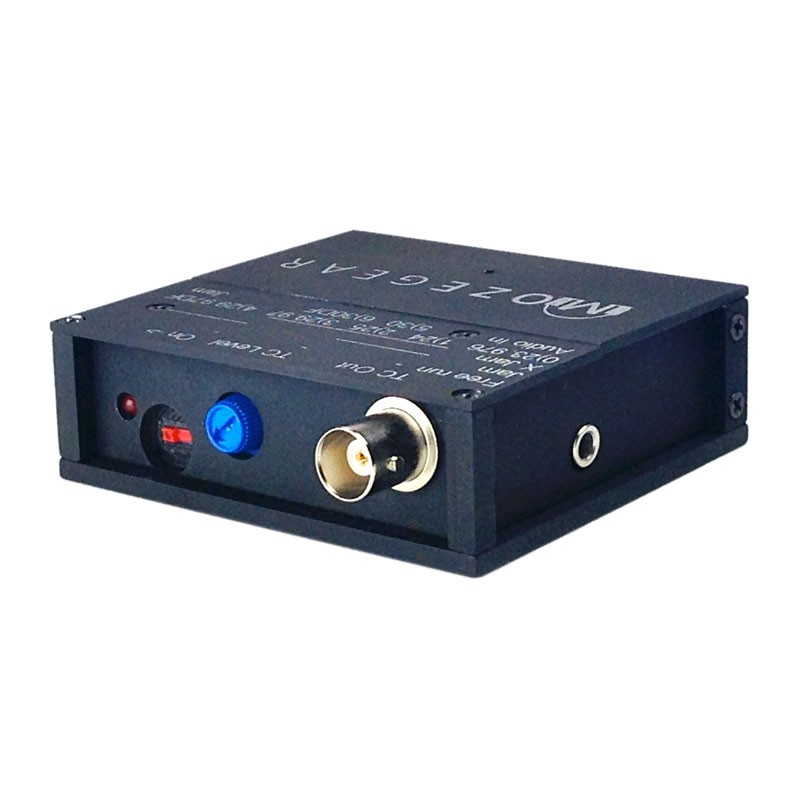I must admit, the first time I read the name “Mozegear”, my first thought was a line of swag featuring Cousin Mose Schrute:
Come on, who wouldn’t buy that shirt for $49.95?
Upon further reading, it became apparent that instead of a taciturn beet farmer with an odd running form, it was an upstart outfit in Arizona, and they’d made a small, versatile new timecode generator/reader, the TIG.
The TIG can be used just like boxes such as the Ambient Lockit or the Denecke SB-3, jammed once at call and once again at lunch, and it will feed the camera with good TC, regardless of any battery changes on the camera itself. The TCXO is rated at +/-.5 PPM, and while it’s not quite the .1 PPM that you generally see, it’s more than accurate enough to get you through 6 hours before re-jamming. (One issue I ran into while testing the TIG: if you happen to use a lemo-dual XLR cable, you will need to ensure that pins 1 and 3 are tied together in the cable chain. I had to go find an unbalanced FXLR to 1/4" MTRS adapter, rather than the off-the-shelf balanced adapter I had been using with my Denecke slates and SB-Ts.)
In use on the Arri Alexa for 2nd Unit with NBC's "Grimm".
In lieu of a display, Mozegear opted for the LED blink code as a visual jam/rate indicator. They thoughtfully silkscreened the code onto the TIG itself, saving you the hassle of diving into a manual in the field. It supports all the commonly used frame rates, including drop frame, up to 30 FPS. There is a rotary rate selector under the hinged battery door, protecting the switch from being accidentally bumped during use.
The TIG is smaller than either the SB-3 or Lockit, almost by half. It’s light, and runs on (2) AAA batteries. The small form factor and low weight will certainly please ACs building either Steadicam or DSLR rigs, which brings me to its killer features: in addition to the standard BNC, it also offers a LTC output on a 3.5mm minijack. This output will feed TC to one audio track of a camera that lacks a dedicated TC input (DSLRs and the Blackmagic line, for examples).
One of these things is awesome with timecode...
With DSLRs, however, you run into the obstacle of a single audio input. If you feed TC, you lose the camera mic and the option of sending a scratch track as well. Mozegear considered this, and provided an audio input on the TIG, which then allows you to feed scratch track to one channel and TC to another on a single minijack cable. This ensures that post will have a courtesy mix for reference before they sync dailies.
On the post side, the only workflow that I’ve tested directly is using the Blackmagic Cinema camera and the free, cross-platform Davinci Resolve Lite software. Once you import your video files, you set each clip to read its TC from the LTC on its audio track. You can then batch sync picture and sound for the day and export for use in your NLE. Easy peasy.
Ah, the internets. You never fail me.
The only other comparable product I’m aware of is the Zaxcom ERXTCD. It offers both audio and TC output from a single device, with the added benefit of being a receiver itself. With the TIG, you’ll still have to mount an RX (IFB/Comtek or dealer’s choice) and send its output through the TIG to lay down audio with TC in the case of a DSLR. The drawback of the Zaxcom unit is that it only jams from Zaxnet, and cannot be used as a TC reader with gear from any other manufacturer. I’d say that if your rig is already Zaxcom, then the ERX would be the way to go for you.
Small, light, versatile, and affordable ($399 MSRP, lower priced and offering more functionality than the next least expensive option, the SB-3), the TIG is a can’t-lose. If you’re building your kit and it’s time to add TC, you find yourself in need of adding TC to a DSLR situation, or you simply want an affordable backup, the TIG is the way to go.
PROS:
- small size and weight
- affordable
- enables TC post production for non-TC cameras
- audio pass-through; you still get a scratch track
CONS:
- no word clock (though that need is specific)
- one more battery type to add to inventory
- you’ll have to hold editorial’s hand while you explain the post process to them
MSRP: $399


No comments:
Post a Comment